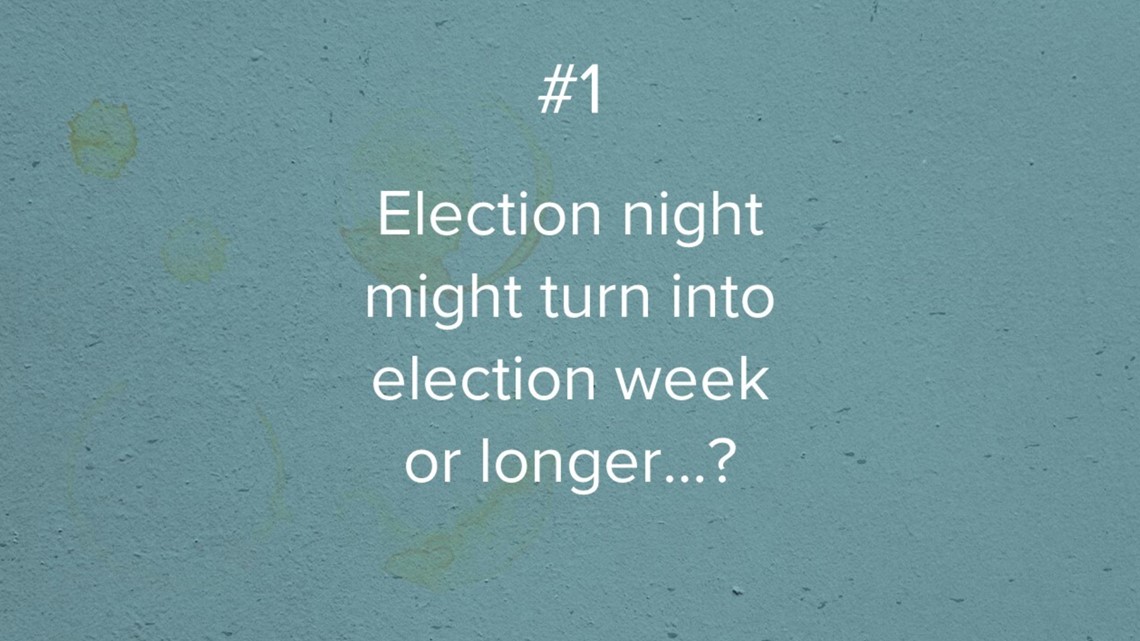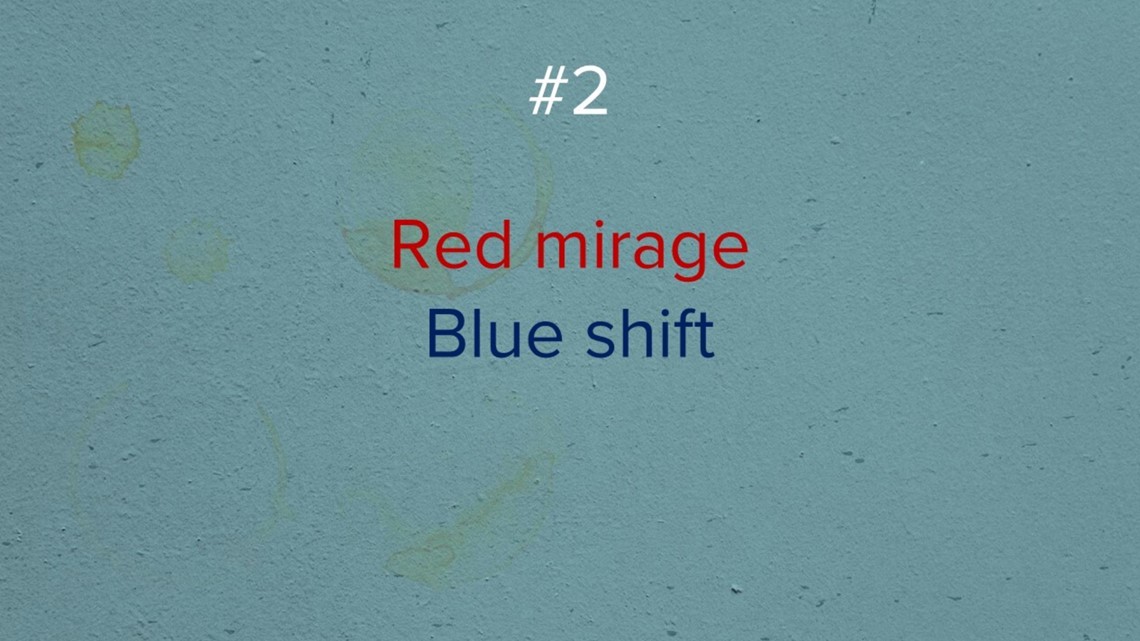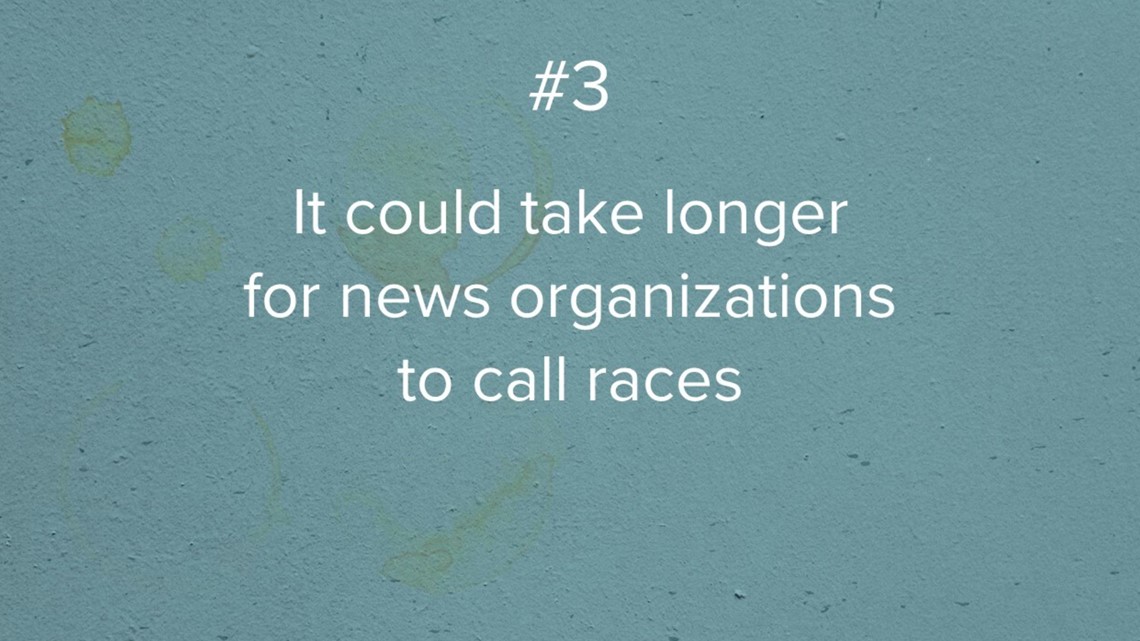This story is the latest installment in our YouTube series, "What's Brewing,” investigative reporter Jenna Bourne's series of homemade deep dives into important issues during the coronavirus pandemic. Click here to check out the series and subscribe to our YouTube channel: The Deeper Dive.
Like just about everything in 2020, election night is going to be a little different than what we’re used to.
10 Investigates is breaking down three ways election night 2020 could be a departure from what you’d normally see. We want you to know what to expect so you’re not caught off guard.
All three election night differences have a common thread: The expected spike in mail-in voting this year because of COVID-19.


“We shouldn’t be expecting election night. It might be weeks. It might be up to a month after Election Day that we actually find out who won the election,” said Kevin Morris, a voting rights researcher with the Brennan Center for Justice at the NYU School of Law.
Morris said it’ll likely take longer for some states to count ballots this year because of the expected increase in mail-in voting.
According to Associated Press data, only about a quarter of states started counting mail-in ballots before Election Day.
Some states won’t start counting them until after polls close on election night.
“The earlier they start, the earlier they’re done counting. It’s as simple as that,” said Morris.
In some states, mail-in ballots don’t even have to be postmarked until Election Day. So, they could arrive at supervisors of elections offices days after polls have closed.
Florida Supervisors of Elections President Craig Latimer, who’s also the Supervisor of Elections in Hillsborough County, told 10 Investigates Florida started counting mail-in ballots 22 days before Election Day.
“We also, by law, have to upload the early votes into our system the day before the election – that Monday. So, at 7:00 or shortly before, the canvassing board is going to order us to produce the results that we have at that point. And we’re going to have all of the vote by mail up to that day and all of the early vote, and then the precincts will start rolling in,” said Latimer.


This brings us to the second way election night could be different: We could see a phenomenon called the “red mirage” or, in more academic circles, the “blue shift.”
A red mirage is less whimsical than the name might lead you to believe.
Democratic data and analytics firm Hawkfish told Axios in September, they’re expecting that President Donald Trump will appear to win in a landslide on election night, and then could ultimately lose when all the mail-in ballots are counted.
That’s because more Republicans are expected to vote in-person this year than Democrats.
And, in some states, in-person ballots are counted first.
A Wall Street Journal/NBC News poll found nearly half of Joe Biden supporters surveyed, 47 percent, said they would vote by mail.
Compare that to President Trump’s supporters at 11 percent.
In some previous elections, people in academic circles have called this phenomenon the blue shift.
“Going into this election, there’s quite a bit of uncertainty about the way in which this phenomenon, this blue shift phenomenon might play out,” said Ohio State University Election Law Program Deputy Director Prof. Steven Huefner.
Some experts are casting doubt on Hawkfish’s model, saying it’s unlikely to be as extreme of a shift as they’re predicting.
That’s because of states like Florida, where Latimer said mail-in and early voting ballots will get counted before in-person Election Day voting.
“It certainly means that the kind of shift that might result from the mail-in ballots is not likely to happen in Florida. That problem will be in places like Wisconsin, Pennsylvania, which are also battleground states, of course, this year. To what extent there might still be some blue shift in Florida because of provisional balloting, that’ll be the question,” said Prof. Huefner.
This matters because President Trump has been casting doubt for months about the validity of an election with widespread mail-in voting.
“There is no way you can go through a mail-in vote without massive cheating,” President Trump told Axios on HBO in August.
So, the president’s supporters might perceive a blue shift as a sign of fraud when, really, it’s just different kinds of ballots getting counted at different times.
“A delay after election night in knowing the official results is not a reflection of a problem. It is, in fact, a demonstration of the sound design of the process,” said Huefner.


You’re probably used to news outlets competing to be the first to call important races.
This year, it might take longer than you’re expecting.
“Everyone is going to have to exercise a whole lot of restraint because viewers want to know on election night. We all want to stay up and not go to sleep until we know who the next president is going to be, or if Donald Trump will be re-elected,” said Morris.
Trusted sources like the Associated Press -- which will call more than 7,000 races nationwide in this election – are trying to manage news consumers’ election night expectations.
“If there is a real increase in mail-in voting, it may simply be that they aren’t able to count fast enough for us, at the AP, to be able to declare a winner. And that’s OK. That doesn’t necessarily mean that there’s something that’s gone wrong in this election. It simply means, again, that there might just not have been enough time on Election Day to count all of the ballots,” said Associated Press Washington Bureau Chief Julie Pace.
RELATED: Why Florida's hodgepodge of voters make it difficult to predict who wins the battleground state
►Breaking news and weather alerts: Get the free 10 Tampa Bay app
►Stay In the Know! Sign up now for the Brightside Blend Newsletter

